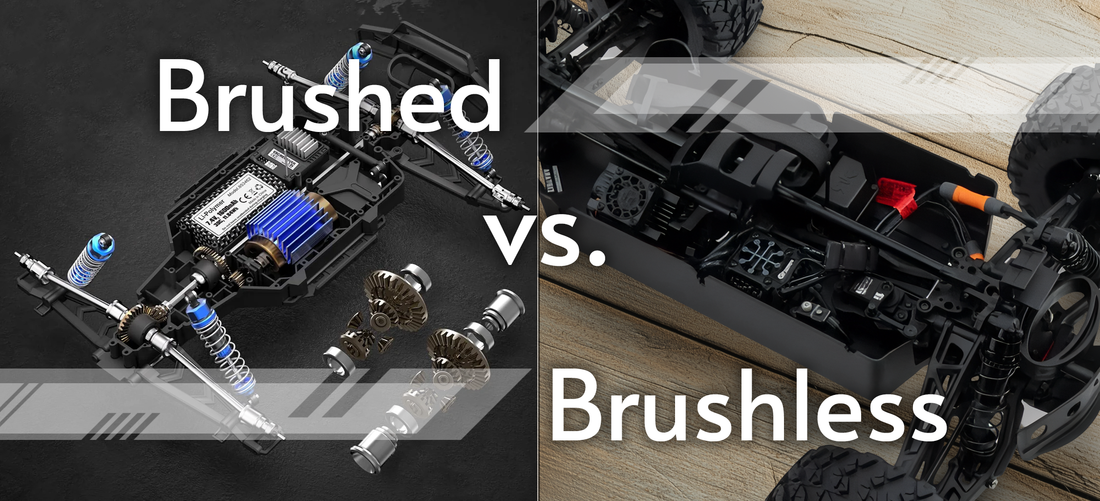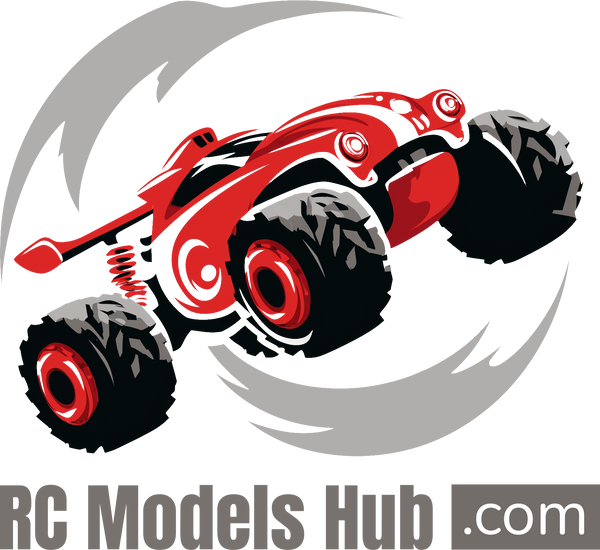
Brushed vs. Brushless Motors: What’s Best for Your RC Vehicle?
Share
Remote-controlled (RC) vehicles bring excitement to hobbyists, whether you’re racing across a backyard, crawling rocky trails, or drifting on pavement. The motor is the heart of every RC vehicle, and choosing between brushed and brushless types shapes your experience. From high-speed monster trucks to smooth-sliding drift cars, understanding these motors helps you pick the right one for your needs. This article explores brushed and brushless motors, covering their performance, maintenance, cost, and suitability for various RC vehicles like buggies, crawlers, or lowriders, guiding beginners and enthusiasts to make an informed decision.
What Are Brushed and Brushless Motors?
Brushed motors power many entry-level RC vehicles, like the HAIBOXING 2995 1/12 Scale Buggy. They use a simple design where carbon brushes contact a spinning commutator to deliver power. This contact creates friction, driving the vehicle but causing wear over time. Brushed motors are common in budget-friendly Ready to Run models and assembly kits due to their low cost and ease of use, making them a great choice for beginners starting their RC journey.
Brushless motors, found in high-performance models like the Arrma Big Rock 6S BLX, eliminate brushes. They rely on electronic sensors and a speed controller (ESC) to manage power, reducing friction and wear. This design boosts efficiency and power output, making brushless motors popular for advanced hobbyists who race or bash off-road. However, their higher cost and need for compatible electronics can be a challenge for new drivers.
Performance: Speed and Power for Your RC Adventures
Brushed motors provide reliable performance for casual driving. The 550 brushed motor in the HAIBOXING 2995 buggy reaches speeds up to 42 km/h, offering enough torque for fun backyard racing or light off-road bashing. They’re great for relaxed sessions or learning RC basics, such as with assembly kits like the Tamiya Honda Civic SiR EG6 for drifting. However, brushed motors can heat up during long runs, especially in demanding tasks like climbing steep trails or racing on rough terrain. Taking short breaks helps keep the motor cool and extends its life.
Brushless motors deliver higher speed and power. The Spektrum Firma 2050Kv brushless motor in the Arrma Big Rock 6S monster truck hits up to 65 mph with a 6S LiPo battery, perfect for high-flying jumps on dirt or gravel. Brushless motors run cooler and handle extended use better, making them suitable for competitive racing or aggressive off-road sessions. For example, a brushless system in a drift car like the Tamiya Honda Civic SiR EG6 supports precise sliding with adjustable gyros. The trade-off is that their high power requires compatible ESCs and batteries, which can be tricky for beginners to set up correctly.
Maintenance: Keeping Your RC Motor in Top Shape
Brushed motors need regular upkeep due to their brush-and-commutator design. The brushes wear down over time, especially in high-use vehicles like the HAIBOXING 2995 during intense bashing. Dust and debris from off-road runs can build up inside, requiring periodic cleaning to maintain performance. For beginners, this maintenance is manageable with basic tools like a screwdriver and brush cleaner, and replacement brushes are affordable, costing just a few dollars. However, frequent checks can reduce drive time, which may frustrate those who prefer low-maintenance hobbies.
Brushless motors require minimal maintenance. Without brushes, there’s no friction-related wear, so motors in vehicles like the Arrma Big Rock 6S last longer with little care. You’ll still need to clean out dirt from off-road driving, but there’s no need to replace internal parts regularly. If a brushless motor fails, repairs often require professional help or a full replacement, which can be more expensive than swapping brushes in a brushed motor. This makes brushless motors appealing for those who value long-term durability over occasional high-cost fixes.
Cost: Balancing Budget and Performance
Brushed motors are cost-effective, making them a great entry point for new hobbyists. Ready to Run models like the HAIBOXING 2995, often priced under $200, include brushed motors to keep costs low. Assembly kits like the Tamiya Honda Civic SiR EG6 also use brushed motors, appealing to builders on a budget. The batteries (e.g., 7.2V NiMH) and ESCs for brushed systems are simpler and cheaper, often costing $20–$50, reducing the overall investment for casual drivers or kids.
Brushless motors come with a higher upfront cost. High-performance models like the Arrma Big Rock 6S, priced between $300–$500, include brushless systems for faster speeds and greater durability. The required ESCs and batteries (e.g., 4S or 6S LiPo) add $50–$150 to the cost, making brushless setups a bigger investment. For enthusiasts, this pays off with longer motor life and better performance, but it can feel steep for beginners or those sticking to casual driving.
Suitability: Matching Motors to Your Driving Style
Brushed motors suit beginners or casual drivers looking for fun without complexity. They power affordable, easy-to-use vehicles like the HAIBOXING 2995 buggy for backyard racing or the Tamiya Honda Civic SiR EG6 for learning to drift. Their simpler controls and moderate speeds (10–42 km/h) are manageable for younger drivers or those new to RC. Brushed motors also shine in assembly kits, offering a hands-on build experience without the need for advanced electronics knowledge.
Brushless motors are better for experienced drivers or those chasing high performance. Monster trucks like the Arrma Big Rock 6S excel in high-speed bashing, delivering thrilling jumps and durability. Brushless systems in drift cars support precise sliding, while crawlers benefit from their torque for tough trails. However, beginners may find the power hard to control at first, and the setup requires more technical know-how. Competitive racers or advanced hobbyists often choose brushless for their edge in events.
Which Motor Fits Your RC Journey?
Choosing between brushed and brushless motors depends on your goals, budget, and experience. For those starting out, a brushed motor in a Ready to Run buggy like the HAIBOXING 2995 or an assembly kit like the Tamiya Honda Civic SiR EG6 offers affordable, fun driving with manageable upkeep. If you’re after speed, durability, or competitive performance, a brushless motor in a monster truck like the Arrma Big Rock 6S delivers thrilling results with less maintenance. Think about your driving style—casual cruising, off-road bashing, or precision drifting—and how much you’re ready to invest in batteries and ESCs. Both motor types have unique strengths, so pick the one that sparks your RC adventure.
